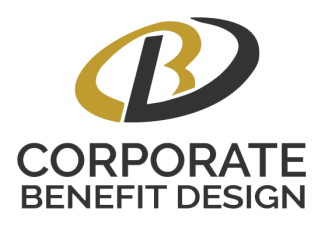Corporate Benefit Design, LLC has designed and implemented employer health plans since 1981. These plans include Fully Insured, Level Premium, and Self-Insured plans.
“Fully Insured” plans have been offered for almost a century. These plans abide by all mandates of the Affordable Care Act. Employer pays monthly premiums to an insurance company which pays employees health claims from an account it owns.
Health plan services provided by fully insured plans include a provider network to include doctors and hospitals, a drug or Rx plan, and claims administration.
Employee’s only focus on their deductible and out of pocket expense. With this plan design, if the health plans annual “claim’s experience” is worse than projected at the start of the plan year the insurance company will typically increase the premium for the next year.
Conversely, if the health plans “claims experience” is better than projected at the start of the year, the insurance company will keep the excess premium paid as additional profit.
Fully Insured plans receiving a rate increase are limited as to an employer’s ability to impact its future costs. The employers options are to (1) pay a greater share of the increased cost, (2) increase the deductible (increased cost to employee’s), (3) increase the out of pocket expense (increased cost to employee’s), (4) have employee’s pay more of the premium (increased cost to employee’s), or a combination of all the above. Employers will often send the coverage “out to bid” and hope another insurance company will offer a better price… a “stop gap” measure.
“Self-Insured” plans offered by Insurance Companies are often ERISA plan’s and, when so, are exempt from many of the mandates of the Affordable Care Act and therefore less expensive. Employer pays monthly premiums to an insurance company which pays employees health claims from an account it owns.
Health plan services provided through self-insured plans offered by insurance companies include a provider network to include doctors and hospitals, a drug or Rx plan, and claims administration.
Employee’s only focus on their deductible and out of pocket expense. With this plan design, if the employees “claim’s experience” is worse than projected at the start of the plan year the insurance company typically increases the premium for the next year.
Conversely, if claims experience is better than projected at the start of the year, the insurance company will keep much to most of the excess premium paid as additional profit.
Self-insured plans offered by insurance companies receiving a rate increase are limited as to an employer’s ability to impact its future costs. The employers options are to (1) pay a greater share of the increased cost, (2) increase the deductible (increased cost to employee’s), (3) increase the out of pocket expense (increased cost to employee’s), (4) have employee’s pay more of the premium (increased cost to employee’s), or a combination of all the above.
Employers will often send the coverage “out to bid” and hope another insurance company will offer a better price… a “stop gap” measure.
In addition, the individual and/or aggregate “Stop Loss” can usually be adjusted to save cost.
“Self-Insured” or Partially Self Funded Plans offered by Corporate Benefit Design are often ERISA plan’s and, when so, are exempt from many of the mandates of the Affordable Care Act and therefore less expensive. Employer pays monthly premiums to a Third-Party-Administrator and a “Stop Loss” provider. Third-Party-Administrator pays employees health claims from an account the employer owns.
Health plan services provided through self-insured plans offered by insurance companies include a provider network to include doctors and hospitals, a drug or Rx plan, and claims administration. In addition, these health plan can offer Transplant Coverage, Cancer Care, Renal Care, Medical Tourism, Tele Doc, and many others.
Employees are educated and become an integral part of the health care solution by taking a vested interest in the health plan’s performance which saves the health plan claims costs thereby reducing the likely hood of poor claims experience.
With this plan design, if claims experience is better than projected at the start of the year, the employer keeps all of the excess premium paid.
Conversely, if the employees “claim’s experience” is worse than projected at the start of the plan year the employer can (1) negotiate a two or three year contract leveling out the increase, (2) put the “Stop Loss” coverage out to bid, (3) pay a greater share of the increased cost, (4) increase the deductible (increased cost to employees), (5) increase the out of pocket expense (increased cost to employees), (6) have employees pay more of the premium (increased cost to employees), or a combination of all the above. (6) adjust the individual and/or aggregate “Stop Loss”, (7) add Reference Based Pricing* (8) add a deeply discounted Kidney Dialysis or Renal plan (9) add Transplant care, (9) add Medical Tourism, (10) add Cancer Care, etc.
‘* What is Referenced Based Pricing… Reference Based Pricing is typically utilized by Self Insured or Partially Self- Funded plans to negotiate fair pricing for procedures which Hospitals frequently overcharge. In fact, many hospitals overcharge by as much as 3-4,000% of Medicare (some as high as 8,000% of Medicare)… by example, hospitals have been known to charge $100,000 for a procedure for which they would accept $7,000 from Medicare.
Reference Based Pricing negotiates with hospitals on behalf of a self-insured or partially self-funded health plan offered by Corporate Benefit Design to bring charges down to a more reasonable amount. Of course, reduced medical care costs result in any health plan performing as anticipated or better than projected at the beginning of the year.
